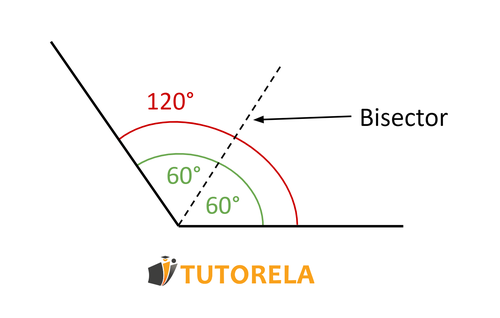A bisector is a line segment that passes through the vertex of an angle and divides it into two equal angles.
The bisector can appear in a triangle, parallelogram, rhombus and in other geometric figures.
For example, a bisector that passes through an angle of degrees will create two angles of degrees each.
